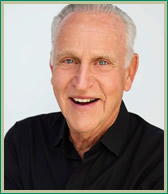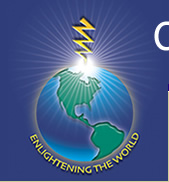
Balancing Head and Heart
|
 |
|
| Dr. Stephen L. Sokolow Executive Director and Founding Partner |
As I was thinking about this topic, a catchy tune from my childhood started playing in my head: “Dem Bones.” The song begins with the notion that the toe bones are connected to the foot bones and the foot bones are connected to the ankle bones; the song continues on upward until finally the nose bone is connected to the head bone. In my mind I hear the words “the heart bone is connected to the head bone.” Now my left brain knows that the heart is a muscle, not a bone. And that the mind is soft tissue protected by the head bone (skull). Despite that, my right brain, which is more symbolic and poetic, readily accepts “the heart bone is connected to the head bone.” My Reiki training tells me that this is true in an energetic rather than a physical sense. We are all energetically wired with a connection channel between our head and our heart, but the flow is not a given. It is something we must work at.
We have come to associate the head with thinking and the heart with feeling. In the Myers-Briggs Personality Inventory, thinking and feeling are displayed on a continuum; one or the other tends to dominate the way in which we process the world. Some people (in my experience, a relatively small percentage) seem to have a near-perfect balance between head and heart. I would suggest that former President Clinton would make a good example in a male and Oprah Winfrey in a female. Both of them have both powerful minds and hearts that seem to work in concert. For most of us, however, our default mode tends to be either head-centered or heart-centered.
I think of myself—and most people who know me would agree—as a “thinking type.” (Notice I didn’t say I feel that I am a thinking type.) I spend most of my time in my head. I am married to a “feeling type.” My wife, Laney, spends most of her time in her heart. It is not unusual for people to seek opposite types in a relationship; this may be true in our professional as well as our personal life. As a superintendent, I usually had a trusted colleague who was a “feeling type” whom I could rely on to give me a heart-centered perspective. To that person I might say, how do you feel about this, as opposed to asking, what are your thoughts on this? I have the capacity to be very compassionate and empathetic, but only when circumstances toggle my centeredness from my head to my heart. Something has to shake me from my natural default position into another state of consciousness. Other leaders have the opposite challenge. They have to learn how to detach emotionally so they can see clearly through their mind’s eye.
We all have gifts and challenges. One of my gifts is a good mind. I also have been blessed with a good heart, but I tend to treat it as a junior partner. The senior partner makes most of the decisions and occasionally relies on the junior partner. I think and feel that “we” are at our best when these two functions are equal partners. One of my challenges as a leader has been to find a better balance between these two aspects of myself. But how?
The first step is self-awareness, as is so often true. Are you primarily a thinking person or a feeling person? Have you taken the Myers-Briggs to see if your perceptions align with the results of the inventory? When you have a conflict between what your head is telling you and what your heart is telling you, which do you rely on? In areas where the risk of a wrong choice is not great, can you test yourself by relying on your less dominant function to see what happens? Ask yourself, if this seems as if it might be an issue for you: Does your intuition or feedback from others lead you to believe you would benefit from a better balance between head and heart? If so, you can set an intention to create a better balance over time. Some issues are no-brainers; it’s clear when the head or the heart should rule. But there are bound to be times when that decision is a tough one. Those are the times when you can seek to balance the scales one way or the other.
As a leader, one area where this balance often came into question was when I was seriously considering firing someone. Some firing decisions are easy, such as those where someone has done something illegal or is grossly negligent. But in cases of mediocre or poor performance, the needs of the person versus those of the organization may be at odds. Suppose the person has been ill, perhaps mentally ill. Do you focus on helping him or her improve and heal, or on the effects of their performance on productivity, morale, other staff members, or profit? As the leader, will you be viewed as compassionate or weak? What does your head say? What does your heart say? Where lies the greatest good, the least harm? Leaders are faced with countless decisions of intricate complexity. The best course of action is often murky. I am simply suggesting that you and your organization will be best served w hen both your head and heart are given the opportunity to weigh in.
Hear the words from “Dem Bones” playing in your head. Feel the tune in your heart. When the channel between the head bone and the heart bone is fully open and flowing, these two centers can operate in concert and become one.
![]()
Center for Empowered Leadership ®
Email: info@cfel.org
Phone: 1.609.259.7911
